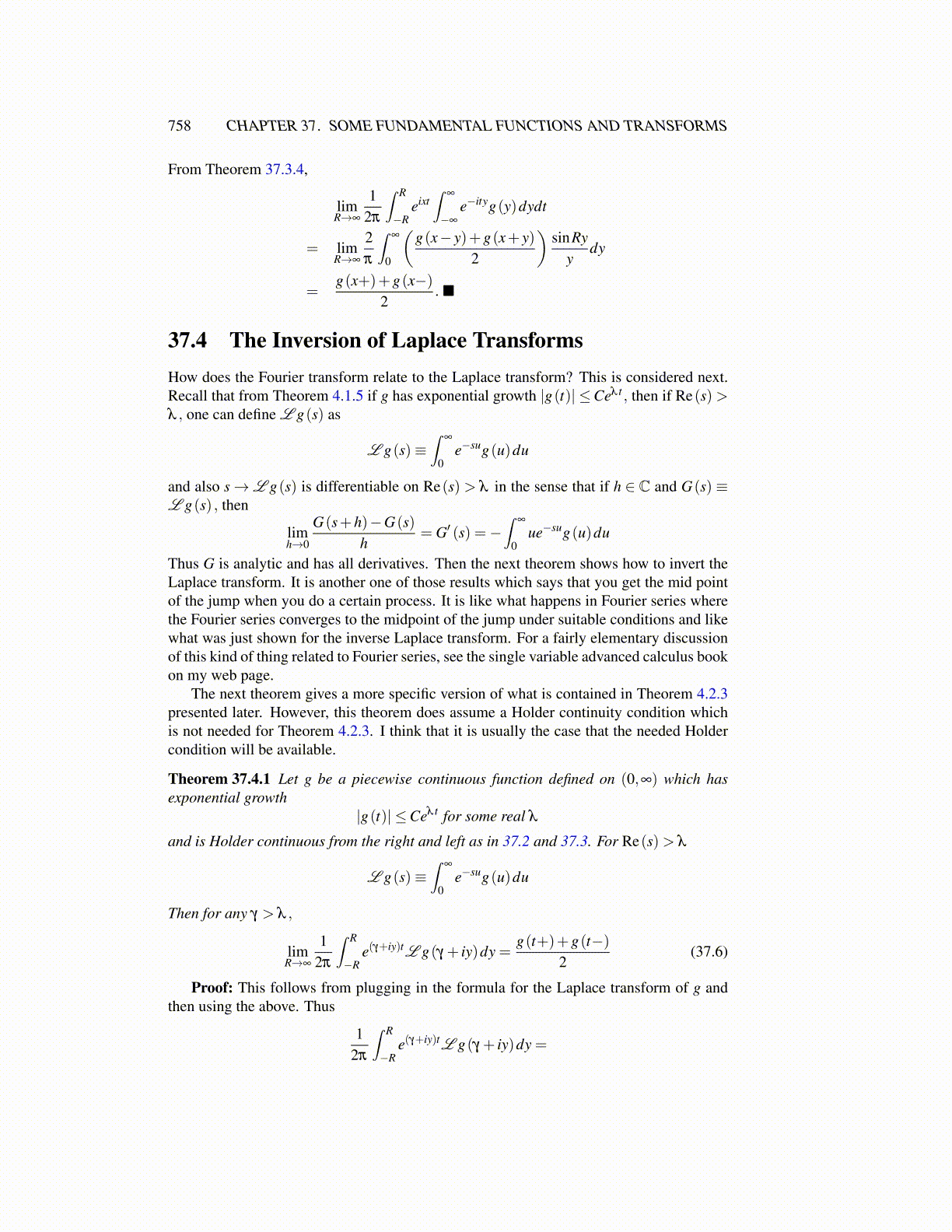
758 CHAPTER 37. SOME FUNDAMENTAL FUNCTIONS AND TRANSFORMS
From Theorem 37.3.4,
limR→∞
12π
∫ R
−Reixt∫
∞
−∞
e−ityg(y)dydt
= limR→∞
2π
∫∞
0
(g(x− y)+g(x+ y)
2
)sinRy
ydy
=g(x+)+g(x−)
2.■
37.4 The Inversion of Laplace TransformsHow does the Fourier transform relate to the Laplace transform? This is considered next.Recall that from Theorem 4.1.5 if g has exponential growth |g(t)| ≤Ceλ t , then if Re(s)>λ , one can define L g(s) as
L g(s)≡∫
∞
0e−sug(u)du
and also s→L g(s) is differentiable on Re(s) > λ in the sense that if h ∈ C and G(s) ≡L g(s) , then
limh→0
G(s+h)−G(s)h
= G′ (s) =−∫
∞
0ue−sug(u)du
Thus G is analytic and has all derivatives. Then the next theorem shows how to invert theLaplace transform. It is another one of those results which says that you get the mid pointof the jump when you do a certain process. It is like what happens in Fourier series wherethe Fourier series converges to the midpoint of the jump under suitable conditions and likewhat was just shown for the inverse Laplace transform. For a fairly elementary discussionof this kind of thing related to Fourier series, see the single variable advanced calculus bookon my web page.
The next theorem gives a more specific version of what is contained in Theorem 4.2.3presented later. However, this theorem does assume a Holder continuity condition whichis not needed for Theorem 4.2.3. I think that it is usually the case that the needed Holdercondition will be available.
Theorem 37.4.1 Let g be a piecewise continuous function defined on (0,∞) which hasexponential growth
|g(t)| ≤Ceλ t for some real λ
and is Holder continuous from the right and left as in 37.2 and 37.3. For Re(s)> λ
L g(s)≡∫
∞
0e−sug(u)du
Then for any γ > λ ,
limR→∞
12π
∫ R
−Re(γ+iy)tL g(γ + iy)dy =
g(t+)+g(t−)2
(37.6)
Proof: This follows from plugging in the formula for the Laplace transform of g andthen using the above. Thus
12π
∫ R
−Re(γ+iy)tL g(γ + iy)dy =